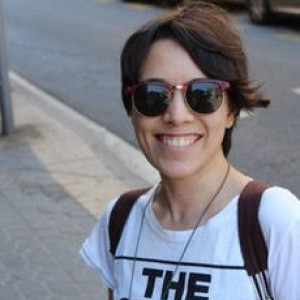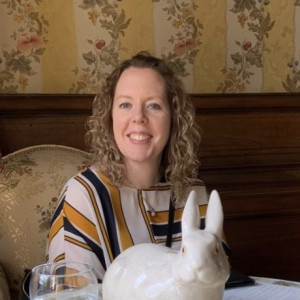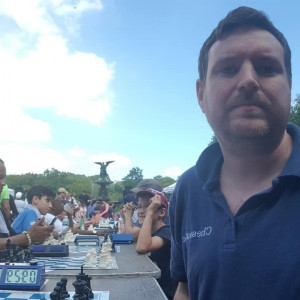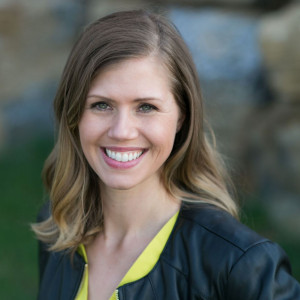How do you stay on task?
Interview with Mehmet, a nomadic digital maker and entrepreneur
Disconnect as much as you can. Go offline, if possible.
In this always-connected era, all of our tools require connectivity. As an engineer, I always try to have my development environments somewhat offline-ready. This step allows me to do some creative work or bootstrap some mini-tool for myself while I take a flight. This also helps if I have bad WI-FI in a weird location (like up in the mountains) or a coffee shop.
To me, the best productivity is when I am “not communicating.” As remote-teams, we tend to go heavier on “communication” and put importance on “presence.” This can be a big enemy for productivity and focus.
Mehmet has embraced his remote team leadership style. Hear about his most helpful productivity trick and why he has "quiet" days for his staff.
Read full interview from Interview with Mehmet, a nomadic digital maker and entrepreneur .
Interview with Cecilia, a content writer managing her remote career in Dubai
First of all, by blocking all distractions using the apps, I mentioned above.
However, I believe distractions are not a sign of laziness, but fatigue or boredom. So when I notice I'm getting distracted, I just take a 10-minute break.
That means getting up and away from my computer. I make tea, get a snack, or even stand in the balcony for a few minutes. I've found that to stay creative and focused; it's better to take breaks rather than force myself to stay on task when my mind is telling me it needs some rest.
Also, when I notice I'm distracted, I remind myself of my priorities. Is Instagram more important than my work? If it isn't, why am I spending time on Instagram when I need to be working? There's a time to scroll through my social media feeds, and there's a time to work.
Cecilia got her start translating blog posts, and in 2018 she went fully remote. See her tips for managing an international remote work career.
Read full interview from Interview with Cecilia, a content writer managing her remote career in Dubai.
Interview with Emma, a freelance marketing consultant
By regularly checking that to-do list! Each time I finish a task, I’ll cross it off the list with great satisfaction and then move on to the next thing.
And if I find one particular task is taking longer than expected, I’ll break it down into sub-tasks that mean I can cross off more things!
Emma is thriving as a freelance marketing consultant—see her tips on managing client demands & making yourself marketable as a freelancer.
Read full interview from Interview with Emma, a freelance marketing consultant.
Interview with Leon, a journalist teaching the world to play chess
I think people work in different ways so it is difficult to come up with a generalisation that will help everyone. However, for me, I like to break the day up into parts where I focus on one single task, so I can get that ticked off.
I also like to have a period of about an hour or two, usually at the end of the day, where I do a bit of "freestyling." For example, going between tasks and making sure I've finished things, finding new tasks to work on later, and checking everything a second time.
Knowing I'm going to spend a small part of my day freestyling means I feel more comfortable really focusing on specific things at other times.
I have a scatty mind, so I make a point to schedule time to manage this.
Leon James Watson is a former journalist who has found the intrinsic value of remote work while teaching the masses to play chess.
Read full interview from Interview with Leon, a journalist teaching the world to play chess.
Interview with Steven Wade, a software engineer working on a remote team
I use Trello to track my tasks across their phases. The Mac app Tyme to track what I'm working on at any given moment.
I also use Slack reminders heavily. I have 2 daily recurring reminders - one at 8:30am and the other at 4:30am - to check GitHub for any pull requests that I've been tagged to review.
All of those things mixed with a consistent schedule help.
Learn more about how Steven works remotely, including his work routine, habits and how he found his remote job
Read full interview from Interview with Steven Wade, a software engineer working on a remote team.
Interview with John, an international business writer sharing 15 years of insights
I take breaks when I need them, so when I return to work, I’m motivated to continue.
For over a decade, John has worked as an international business writer. See his insights on the state of remote work, freelancing, and attracting clients who are the right fit.
Read full interview from Interview with John, an international business writer sharing 15 years of insights.
Interview with Pola, a Paris-based content writer
By limiting distractions. That could be silencing the phone, changing online status to “do not disturb,” or not checking emails right as they come in. If I’m looking at a blank page too long, doing a few stretches can help. Oh, and coffee!
A job ad in an online group led Pola to find her ideal career as a content writer—see her remote work & job seeking takeaways.
Read full interview from Interview with Pola, a Paris-based content writer.
Interview with Tammy, founder and CEO of Workplaceless
When I journal every morning, I write down the three most important things I have to do that day. The goal is to get those things done before doing anything else.
I also keep track of my time using a Google Sheet, and keep track of all the tasks I have to do (and my team is working on) in Asana.
Learn how this founder and CEO of a remote work resource and certification program handles the triumphs and trails of location independence.
Read full interview from Interview with Tammy, founder and CEO of Workplaceless.
Interview with Celine, a VP of People Ops and remote team member
Being remote did not change the way I work. Not at all.
I know what I have to do, and I organize myself accordingly. Working from an office or being home did not change a thing.
Being remote means you need not be shy in asking questions and being autonomous on your role.
Celine has experienced the highs and lows of working with remote and hybrid teams—see her tips for thriving as a member of a remote team.
Read full interview from Interview with Celine, a VP of People Ops and remote team member.
Interview with Tara, a remote director of research and administration
I am very routine-oriented (ask my husband!). Lists are also very helpful—I love checking things off.
And I do try to complete the most dreaded task first, to get it out of the way.
A move to be closer to a spouse's job led Tara to remote work—see her tips for staying productive and organized as a full-time remote director.
Read full interview from Interview with Tara, a remote director of research and administration.









